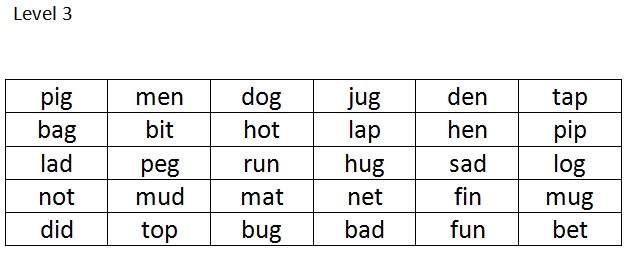Understanding vowels is the foundation for reading and writing the English language. Try stringing a line of consonants together and ask your child or students to make sense of what they see. They will soon realize that vowels give meaning to words and create patterns that assist their ability to read correctly.
It is essential for young children to be exposed to the power of vowels from the earliest stages of their reading development. Research has demonstrated that confusion with vowel sounds, or a lack of knowledge for the importance of vowels in words, serves to create much of the reading problems we see in literacy support classes at school.
For instance it is not uncommon for young children to confuse the vowels “i” and “e”. One way to overcome this problem is to focus on these vowels independently in the first instance and then to participate in classification activities so students learn to differentiate between the two vowels sound. Following is a sequence of a few simple tasks to teach children to decode words which contain the “i” or “e” vowel sounds.
1) Make large cut outs of both sounds. Display and discuss the difference in the shape of the letters.
2) Display word list that contain “i” and “e” as beginning and medial sounds. Colour code vowels to assist young readers with their visual perception of the sound.
3) Make picture cards of relevant words and their name and have children classify them according to the vowel sound. (Visual example would be good here)
4) Make mixed up silly sentence activities which focus on one of the vowel sounds for children to cut and paste in the correct order.
A similar problem can also emerge with the vowels “a” and “o” as the shape of these letters is similar. The same activities above can be adapted to these vowels as well as the following activity which is more specific to the “a” and “o” sounds.
1) Give children a worksheet that demonstrates the shape of both letters.
Ask them to make a smiley face on the “o” letter to show how Mr “o” looks straight ahead. Next draw an ear on the right side of the “a” and a nose on the left to demonstrates how Mr “a” looks to the side.
When children have a strong grasp for the first four vowels, and are competent with identifying them in print at the beginning and medial junctions of a word, introduce the “u” sound.
When you sense children are ready to work with the five vowels together, construct simple tasks that assist you to assess their understandings for reading the five vowels. Classification of activities using words with medial vowels is powerful indicators for children’s understandings for example. Below is a list of words that could be made into a cut and paste activity as an enjoyable, yet accurate form of assessment.
This task can be different to meet differing stages of understanding, at a teacher or parent’s discretion as follows:
Take vowels seriously when teaching young children the basic of reading. Lack of understanding can be evident for reading and spelling problems in later stages of literacy development. Let your creativity reign and HAVE FUN!





